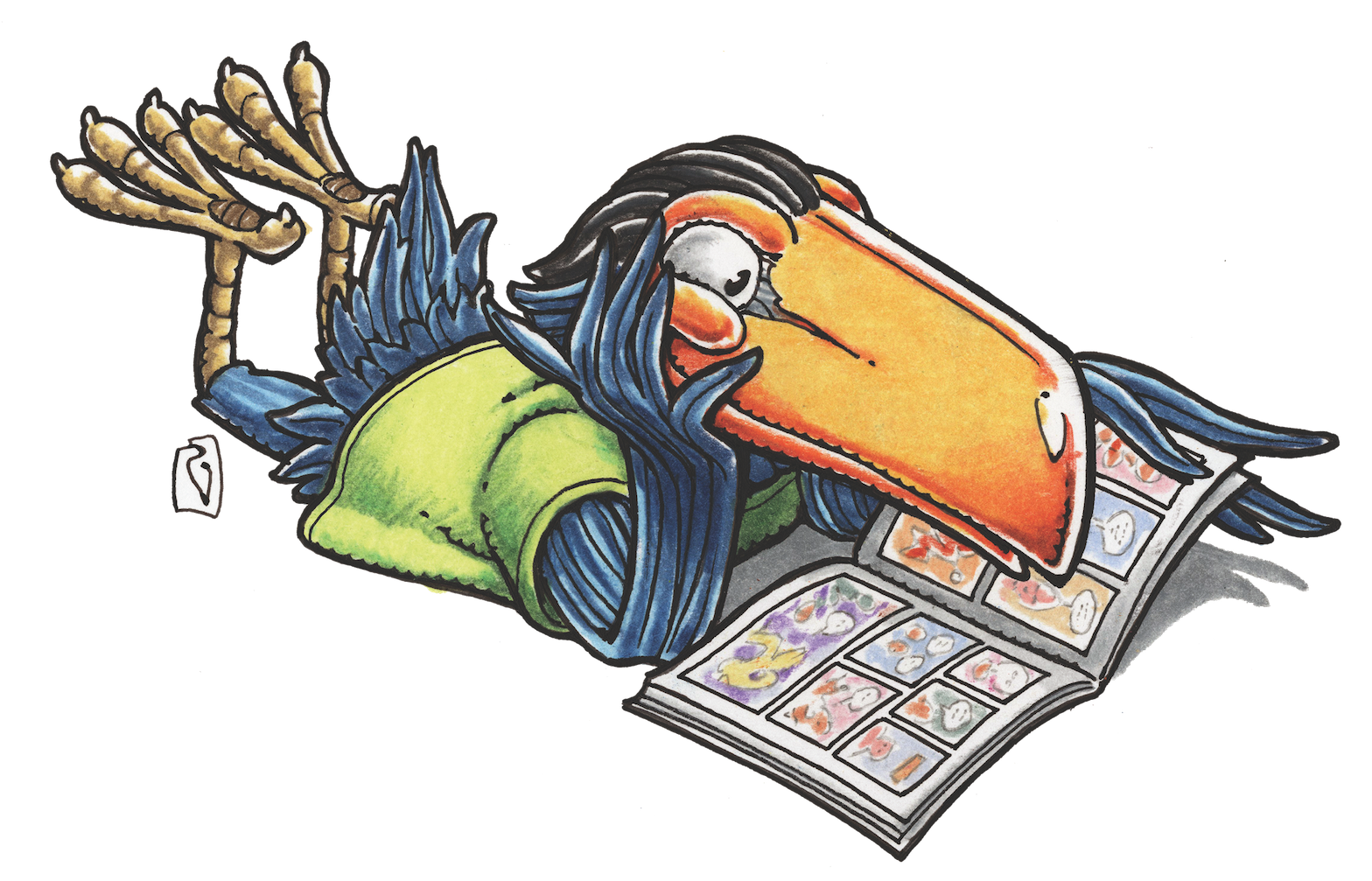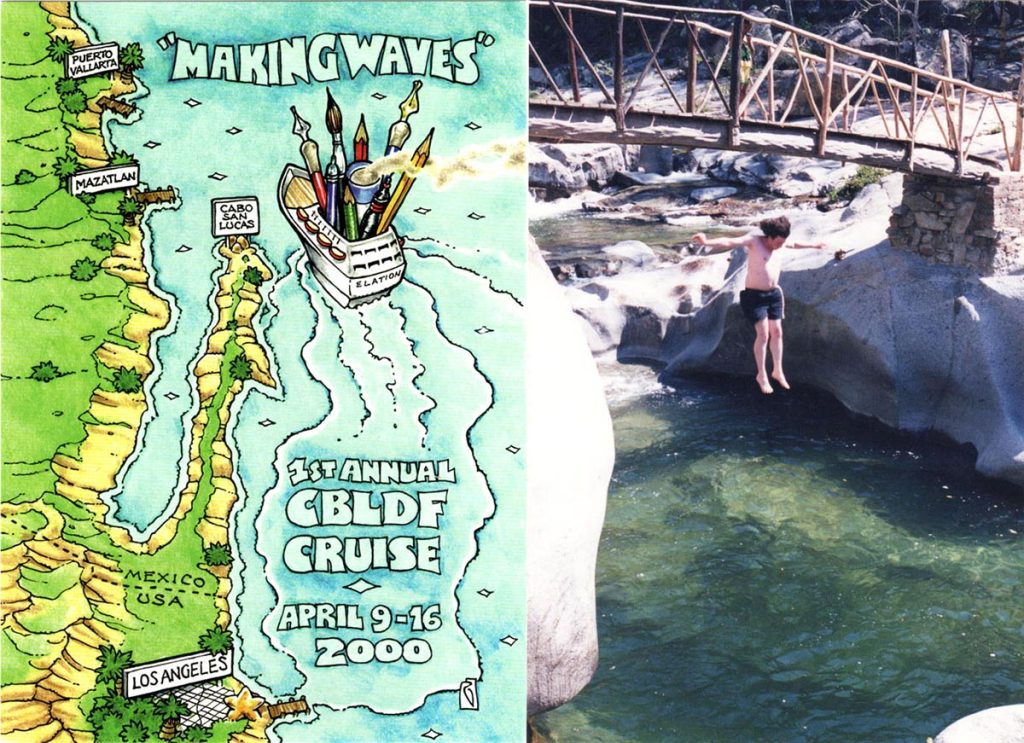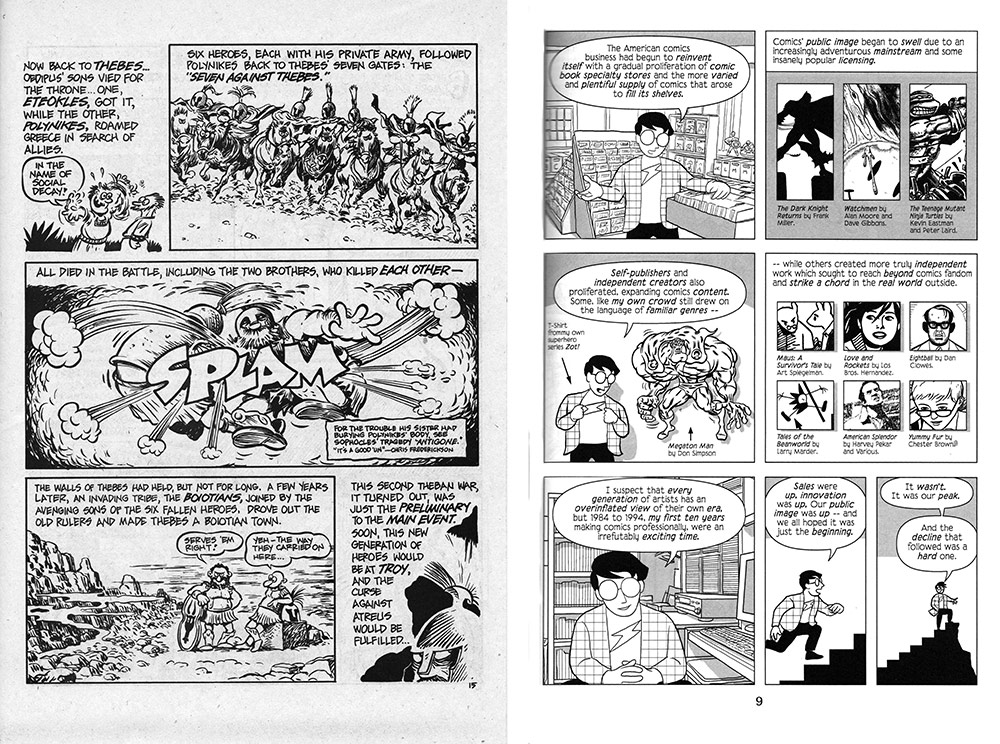MAGGIE’S WORLD BY MAGGIE THOMPSON
Maggie’s World 080: Changes

Just when you think you’ve figured out what “life as usual” is …
Every once in a while, I plan ahead. As 2019 was counting down to New Year’s Day and I considered topics for 2020, I realized that April 2020 would mark the 20th anniversary of a memorable, joyous event. My decision then was to focus in this 80th Toucan column on that wonderful experience. And to suggest that it might be time to institute another comics cruise.
What it has turned out to be, instead, is time to think again.

What Was So Great about a Comics Cruise, Anyway?
Folks working to raise money to supply legal aid to the comics field (especially comics shops) came up with ideas for fund-raising events. In 2000, the idea was to put a bunch of fans and pros together on a cruise ship and visit three ports in Mexico: Cabo San Lucas, Mazatlán, and Puerto Vallarta.
It was incredible: Old friends shared new experiences. Many pros and fans made new friends.
Nevertheless, it isn’t a good topic for April 2020. Time to change the focus. But, hey, changes have been a factor throughout the history of comics. (Well, throughout history in general, but the focus is on comics here.)

Decades of Comics Changes
The 1800s brought growing popularity for captioned cartoons and magazines in which they were displayed. 1841 saw Punch #1 in England, and, in 1884, Ally Sloper’s Half Holiday introduced a recurring comics character. Such creators as Thomas Nast, Rodolphe Töpffer, and John Tenniel produced popular work in the field. Heck, by 1900, there were continuing cartoon characters, picture-stories aimed at readers young and old, Palmer Cox’s The Brownies, color newspaper inserts, and many, many recurring comics characters.
In short, things were off and running, with readers quickly becoming fans of panel cartoons and strips and buying books that collected them.
Animated Cartoons
1900 was another comics turning point, starting with animation pioneer J. Stuart Blackton playing around with formats. Winsor McCay’s “Gertie the Dinosaur” was produced by 1914, complete with his development of registration marks and other standard animation techniques.
Then, following a variety of other entertainment developments, along came Ub Iwerks and Walt Disney, with Oswald in 1927, “Steamboat Willie” in 1928, and then on to Disney’s 1932 “Flowers and Trees,” Snow White and the Seven Dwarfs in 1937-1938, and more and more technical (and delightful story) developments including One Hundred and One Dalmatians in 1961.
(Footnote: The first reported (non-animated) TV image was of the comics character Felix the Cat; I didn’t want you to think I’d forgotten.)
Periodical Comic-Books
Much of the focus on the comic artform in the twentieth century came through the developing nature of magazine comics. In 1920, the British Film Fun comic book began; in 1925, The New Yorker was released; other comics appeared around the world. Then …
Heck, it happened before 1930: Dell’s The Funnies #1 (1929) is credited with being the first all-original-content U.S. comic book to be sold on newsstands. Sure, it wasn’t in what has become the current format, but there it was. Big Little Books were introduced in 1932 with The Adventures of Dick Tracy, Detective. So, yes, reprint format again, but the next year saw the promotional Gulf Comic Weekly.
And then it was 1934. Famous Funnies #1, published by Eastman Color, is considered to be the first newsstand comic book and it featured reprints of such strips as Mutt and Jeff and Tailspin Tommy. And the next year, what’s considered to be the first DC comic book (though it wasn’t released under that imprint)—the large size New Fun Comics #1—featured original material.
Soon, it was 1936, and newsstands were filling up. There were first issues of Popular Comics, King Comics (featuring King Features strip reprints), Tip Top Comics, and The Comics Magazine. Funny Pages introduced The Clock (the first masked hero in comics), and Detective Picture Stories was the first detective comic book as well as, because of that, being the first single-theme comic book.
Then, yes, 1938 brought Action Comics #1, and Marvel Comics was released the following year. To sum it up: The 1930s were Comic-Book Time. Yay! A new art form had emerged!

But …
In the May 8, 1940 issue of Chicago Daily News, Literary Editor Sterling North’s “A National Disgrace” attacked comic books as “a poisonous mushroom growth of the last two years.” Even people who had been reading comic strips in their newspapers every day attacked the artform. By 1948, some publishers announced the formation and code of standards of the Association of Comic Magazine Publishers. Nevertheless, a couple of years later, Senator Estes Kefauver announced a Special Senate Committee to Investigate Organized Crime in Interstate Commerce to investigate possible violations of postal laws by comic book publishers. In 1953, Fredric Wertham garnered publicity for the upcoming Seduction of the Innocent. And, in 1954, the Senate held hearings to make “a full and complete study of juvenile delinquency in the United States,” with a focus on comic books—which by then were being subjected to actual book burnings.
(You want to know why it’s so hard to find Golden Age comics in good condition? Consider World War II paper drives, 1950s condemnations, and book burnings.) In 1954, the new Comics Magazine Association of America adopted provisions of its new codes: one for editorial, one for ads. And things calmed down.
Comic Book Distribution
But here’s the thing: The CMAA was also a racking program, providing a distribution service to its members. Readers looking for current comic books were better able to find them. (Mind you, those without CMAA membership still required a hunt: Dell, Gold Key, and Gilberton releases weren’t available everywhere.)
Then, it was 1977, and Phil Seuling announced formation of Sea Gate Distributors, offering pre-ordered, non-returnable comics at a discount to shops—and so, soon, did other firms. Five years later, in 1982, Diamond became another of the several comics-shop distributors. In 1995, DC announced Diamond as its exclusive distributor. The comics shop market adjusted and adjusted and adjusted—and 2002 saw the introduction of the industry-wide Free Comic Book Day. Which, yes, is having to adapt in 2020.
So.
Now …
Well, here we are. The ground shifts under us, with technology helping some and complicating life for others, creators working to meet sometimes self-imposed deadlines, reimbursement for some on hold, and … You know.
Comics have come far since the 1800s, the early 1900s, the 1930s, the 1950s, the 1970s … Heck, at a time when schools and libraries have finally recognized the excellences of the artform, many activities are on pause, as many of us self-isolate.
Prepare for the worst, prepare for the best, make plans for whichever.
Comic art is based on imagination. Imagine the field two decades from now.
But I already know one thing about 2040: Even if we all make it safely through 2020 and even if I live to be 97, I’ll think twice about going on a cruise again.
Maggie’s World by Maggie Thompson appears the first Tuesday of every month here on Toucan!